It was a 72-degree Christmas Eve in 2015 and I had the cabin fever, so even though it was intermittently drizzling or lightly raining I sallied forth with the camera in search of something interesting. I decided to hit Brooklyn Heights, a neighborhood I can’t afford, but in which I went to school and worked from the years 1975 to 1981. Those were years in which I had an interest in the forgotten aspects of New York City, but not yet a burning passion, so my lunch hours at St. Francis College and the Brooklyn Business Library were spent eating lunch with friends in the cafeteria or doing the same or sleeping in the school newspaper’s office or the break room at the library. In retrospect they would have been much better spent by hoofing around the neighborhood with a film camera, but that would have been a more expensive proposition.
I have recently hit upon the idea in FNY of revisiting NYC’s few alleys I had done a cursory survey of, when I first started photography for the site in 1998, but in somewhat more depth when possible, taking pictures of individual businesses or homes found on them. For today’s session I gravitated toward a pair of alleys on either side of Hicks Street south of Remsen Street, Grace Court (which is on the west side) and the unimaginatively-named Grace Court Alley, on the east side. The former features some multifamily dwellings from the 19th Century along with huge apartment houses built in the 20th — while the latter is lined with charming carriage houses, former stables that now sell for millions when on the market.

Grace Court is named for Grace Episcopal Church on the southwest corner of the court and Hicks Street. There’s a number of historic Grace Churches around town, from the one at the bend of Broadway and West 10th Street in Greenwich Village (1846, James Renwick) in downtown Jamaica, Queens (1862; also accompanied by a Grace Court) Canarsie, Brooklyn (now called the Church of the Rock, but the tallest steeple in the neighborhood) and City Island, Bronx (1867). All are, or were, Episcopalian or Anglican, as preferred these days.
Brooklyn Heights’ Grace Church was the work of Richard Upjohn and was completed in 1849, a few years after his NYC masterwork, Trinity Church at Broadway and Wall Street, and it resembles that building’s British Gothic Revival style. (Trinity, Grace and what was originally the Church of the Pilgrims at nearby Remsen and Henry Streets have all held up well among Upjohn’s churches; but his St. Saviour’s Church in Maspeth, Queens is a sad story.) It was actually built so Brooklyn Episcopalians wouldn’t have to ferry over to the Renwick church in Manhattan.
Built of red-gray New Jersey sandstone, the building has many vertical projections in the form of pinnacles and finials, gables and parapets. An enormous and beautiful traceried window dominates the eastern wall behind the altar. The alabaster altar, stained glass windows, mosaic tile floors and stone columns create an interior of rich design. Grace is set among large trees, with a charming courtyard, giving the impression of an English parish church within the city. Grace Church
Brooklyn Church Uncovers a Long-Hidden Celestial Scene [New York Times]
Grace Church [American Guild of Organists]

A look at the buttresses and stained-glass windows on the Grace Court side. Three of these windows are Tiffanys, but I’m not sure which.
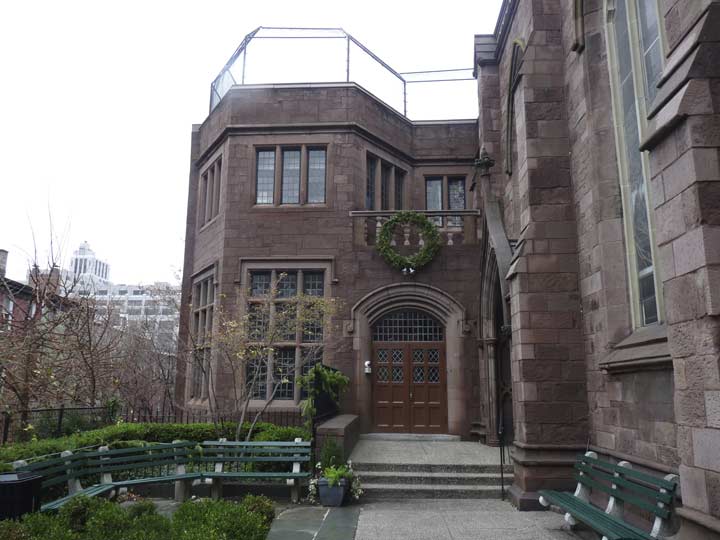
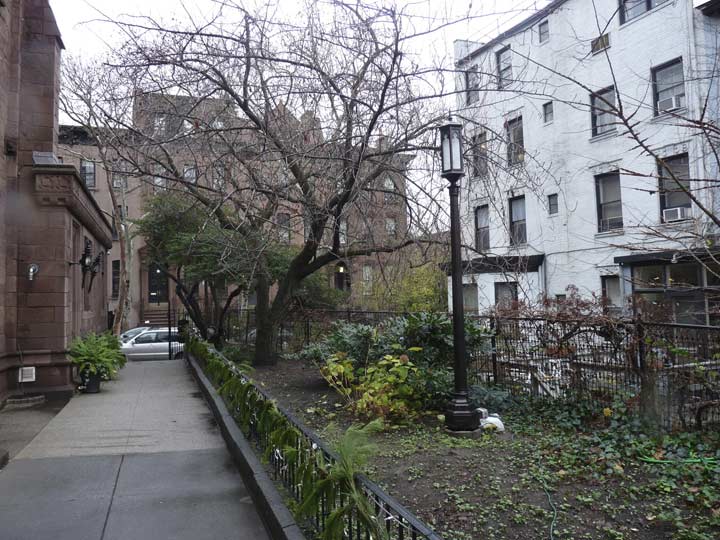
A secluded walkway on the south side of the church leads to the parish house, constructed in the 1930s in a sympathetic style to the church it serves. The public is invited to relax on the NYC park-style benches.

The rear ends of private homes facing Joralemon Street are visible from the walkway, but there’s enough space and fencing so everyone’s privacy is protected.

Looking through the online David Rumsey map collection, the first graphic representation I can find with a Grace Court in it is this section of a Colton atlas plate from 1869. I’d say the lane was built sometime before that but not before the church itself was constructed between 1847 and 1849. An unnamed Grace Court Alley is also shown.
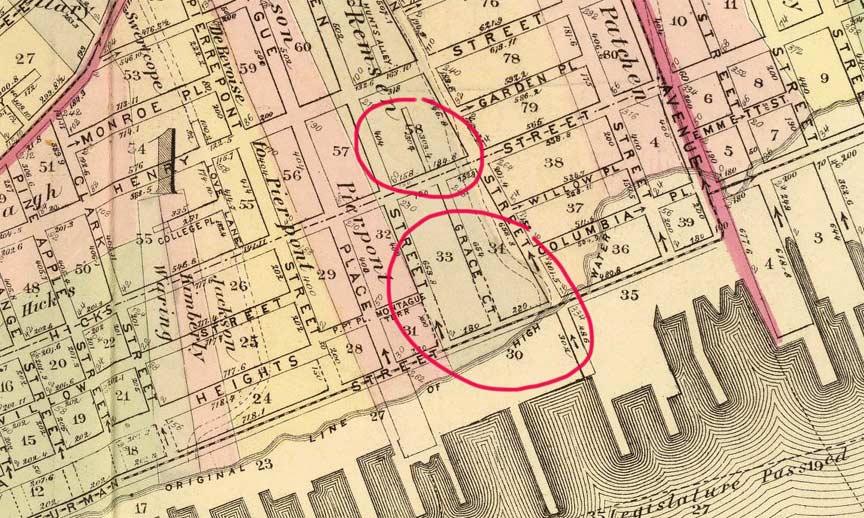
A Beers map from 1874 also shows Grace Court and the still-unnamed alley. Dotted lines of Grace Court and Remsen Street indicate a not yet built connection to Furman Street; such connections would require going down a very high hill.
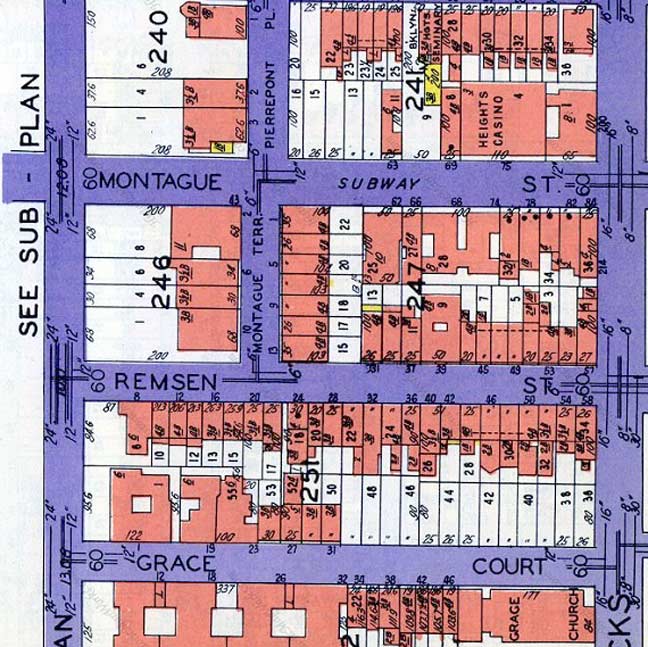
By 1929, a connection to Furman is shown on this Belcher-Hyde atlas plate. The Brooklyn-Queens Expressway has ran east of Furman since the Fab Fifties, and I’m not sure that connection of Grace and Remsen to Furman was ever made. By this time, as we’ll see, today’s structures along Grace Court have all been built.
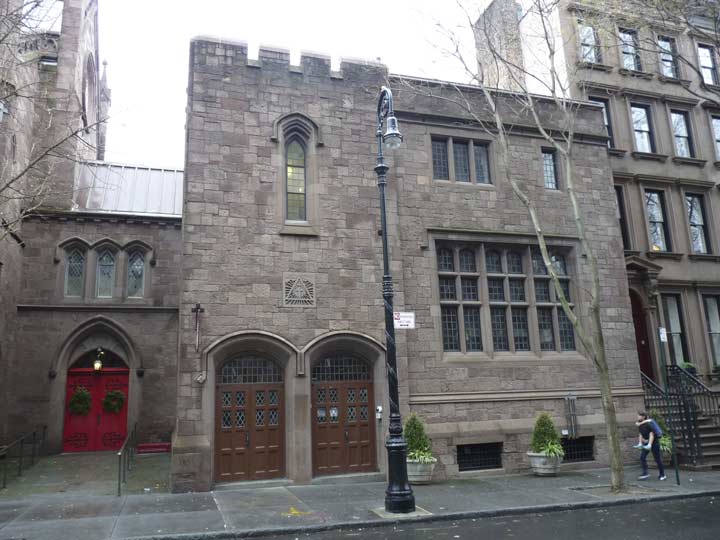
Here’s the portion of the parish house that faces Grace Court. I’m a fan of the wood doorways with the multiple panels, some glassed, some not, and the glass panels in the arches above the doors.

The Bible of Brooklyn Heights, Clay Lancaster’s “Old Brooklyn Heights: New York’s First Suburb,” first published in the 1960s (I was given a Dover paperback edition as a birthday gift in 1982) is silent on the attached Italianate brownstone buildings at #32-46 on the south side of the court. #42 is notable for its copper-clad bay window with stained glass treatments on its 3 panels.

The whole row likely goes back to the 1880s. If I had to guess I’d say this pair is the oldest of the bunch.
A truly humungous apartment complex, #2 Grace Court, dominates the west end of the south side. The Belcher Hyde map has two separate buildings here, so the two may have had separate address at one time. The building went up in the 1920s.
The west end of Grace Court overlooks the Brooklyn-Queens Expressway and Brooklyn Bridge Park along Furman Street, which is in various states of completion and construction. There’s also the same view of the Manhattan skyline available from the Promenade a couple of blocks north, as well as from some of the apartments on both sides of Grace Court.

The brightly colored water tank visible here from Grace Court and to motorists along the BQE is the work of sculptor Tom Fruin and joined a similar work of his in DUMBO further north in Brooklyn Bridge Park.
The inspiration behind this newest piece comes from a previous work of Fruin’s titled Treaure Maps: RV Ingersoll. Traces of the quilt-like map (assembled with trash found by Fruin inside the Ingersol Projects in Fort Greene, Brooklyn) can be easily found on the watertower, especially with Fruin’s use of blue and clear glass that strongly resembles his previous work. Fruin adds to this contemporary piece with patterns around the sculpture: hearts, leafs, bunnies and even the Batman logo. Untapped Cities
Another pair of large apartment buildings from the 1920s, #1 and #19 Grace Court, dominate the north side. Until the mid-1910s, large mansions overlooking the water were the kings of both sides of Grace Court’s west end, one of which was owned by William Satterlee Packer, a founder of nearby Brooklyn Female Academy, now the Packer Institute on Joralemon Street.
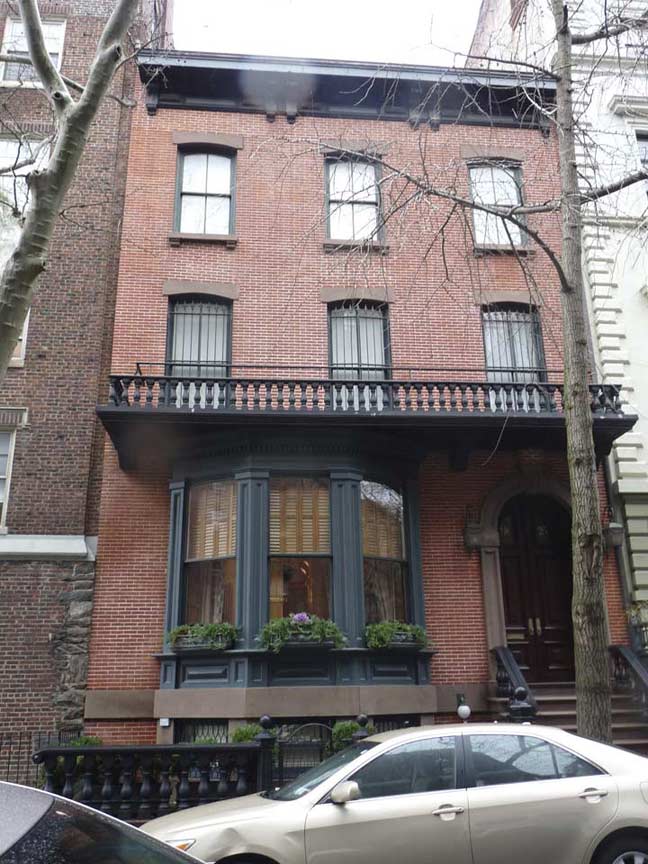
I liked the modest brick #25 Grace Court, with a polygonal (3-sided) bay window and a second story porch that makes good use of small Tuscan-style columns on its railing (instead of the large white ones so favored by building remodelers today).
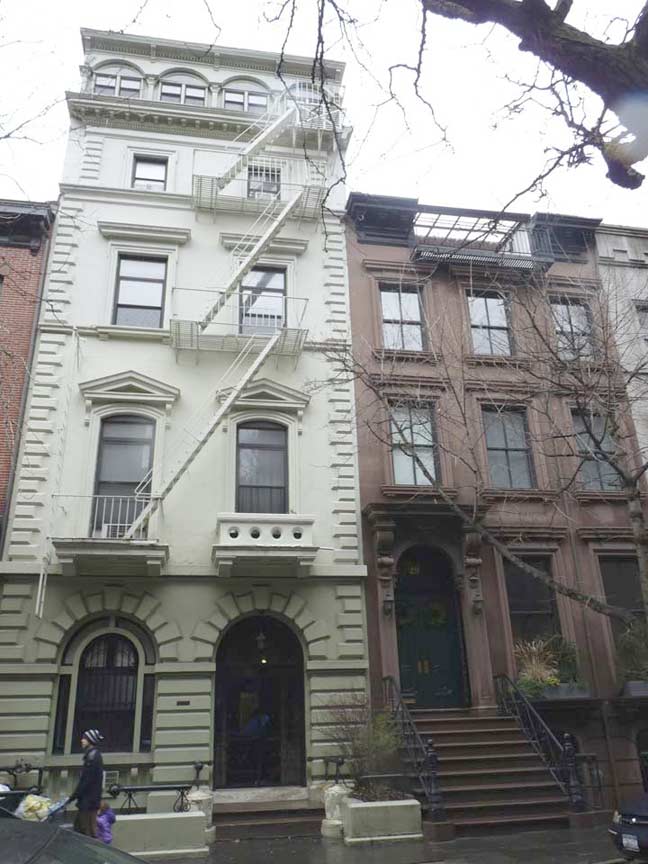
There’s a trio of dwellings on the north side of Grace Court that merited Clay Lancaster’s attention. #27, on the left, is a narrow 5-story Renaissance Revival buildings listed in 1855 directories (thus, we know Grace Court, or the lane later called Grace Court, was in existence then) and was originally the home of Reverend Francis Vinton, rector of Grace Church.
At right #29 is another Renaissance Revival, this time in brownstone, listed in a Brooklyn city directory in 1856.

#31 Grace Court is also listed in 1856 directories and was originally the home of Louis Ludovici, described as a “hidebroker.” This was a term used for leather wholesalers. #31 likely looked similar to #29 but has had some of its elements stripped away.
Wide Open Spaces

For me the most interesting aspect of Grace Court is that all but one of the plots on the north side of the street between #31 and Hicks Street have no buildings at all, but instead face the spacious back yards of the houses on Remsen Street a block to the north, and a shambler on Grace Court can easily stick his camera between the spikes on the venerable iron fence protecting the properties and snap away.
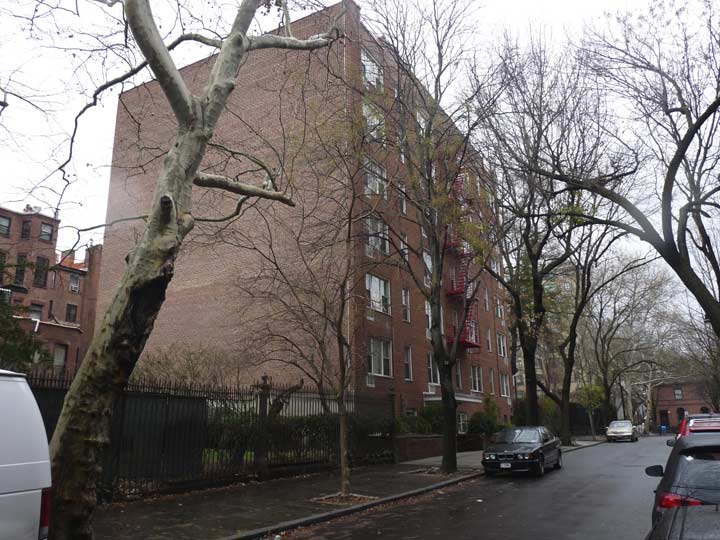
In the Swinging Sixties, modernity encroached on Grace Court, and a bland, modern apartment house, #45, was built on 4 of these plots, interrupting the view of the back yards, which is available on either side of the building.

For a last look at Grace Court, I zoomed the lens from Hicks Street all the way to the end of the court, a view likely much better during clear weather.
Grace Court Alley

Grace Court Alley proceeds eat to a dead end from the east side of Hicks Street south of Remsen. It is not exactly on the same line as Grace Court and the two may have developed independently of each other. I’m not sure when it acquired its awkward name, but there are a couple of other Brooklyn streets that follow the same pattern: Shore Road Lane, on Shore Road just south of Ft. Hamilton High School in Bay Ridge, and Shore Road Drive, built in about 1940 to connect 4th Abvenue and 66th Street with the Belt Parkway (it does not intersect Shore Road, and I’m not sure if it ever did). The Department of Transportation did not mark Grace Court Alley with a sign in December 2015, but it may be awaiting new signs in the Clearview font.

The 1929 map of the area shows the buildings along the alley, which are unchanged today.
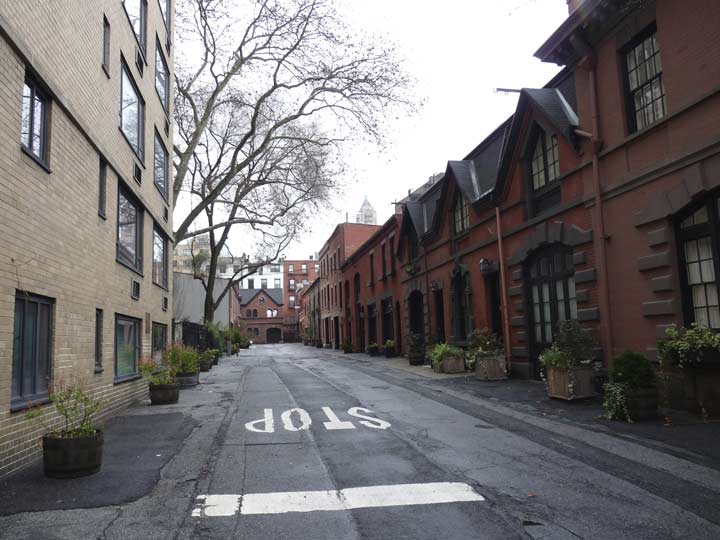
Grace Court Alley presents a completely different aspect from Grace Court. Like Manhattan’s Washington Mews and Macdougal Alley, it was a lane that originally held stables serving buildings on parallelling streets. Long ago the stables were converted into carriage houses, and today fetch prices unimaginable to the artisans who built them in the 19th Century. Most of Grace Court Alley’s north side and all of its south side are given over to these carriage houses.
Oddly the term “mews” originally had nothing to do with horses:
The term mews is plural in form but singular in construction. It arose from “mews” in the sense of a building where birds used for falconry are kept, which in turn comes from birds’ cyclical loss of feathers known as ‘mewing’ or moulting.
Though the term originated in London, its use has spread to parts of Canada, Australia and the United States (see, for example, Washington Mews in Greenwich Village, New York City).
From 1377 onwards the king’s falconry birds were kept in the King’s Mews at Charing Cross. The name remained when it became the royal stables starting in 1537 during the reign of King Henry VIII. It was demolished in the early 19th century and Trafalgar Square was built on the site. The present Royal Mews was then built in the grounds of Buckingham Palace. The stables of St James’s Palace, which occupied the site where Lancaster House was later built, were also referred to as the “Royal Mews” on occasion, including on John Rocque’s 1740s map of London. wikipedia
When I was in Calgary, AL a few years ago for a conference on alleys (yes, there was one) I shared the symposium with a Briton, Sebastian Deckker. His book “Mews Style” is a modern bible for London’s many mews.

Information on the individual carriage houses is sketchy. However The AIA Guide to NYC (White and Leadon, 2010) makes note of the “crisp, contrasting brownstone quoins” on #2 and 4 on the south side of the alley. Even for stables, great care was given to detail and workmanship in the 19th Century. Note that Grace Court Alley has no sidewalks and owners walk in directly from the roadbed.
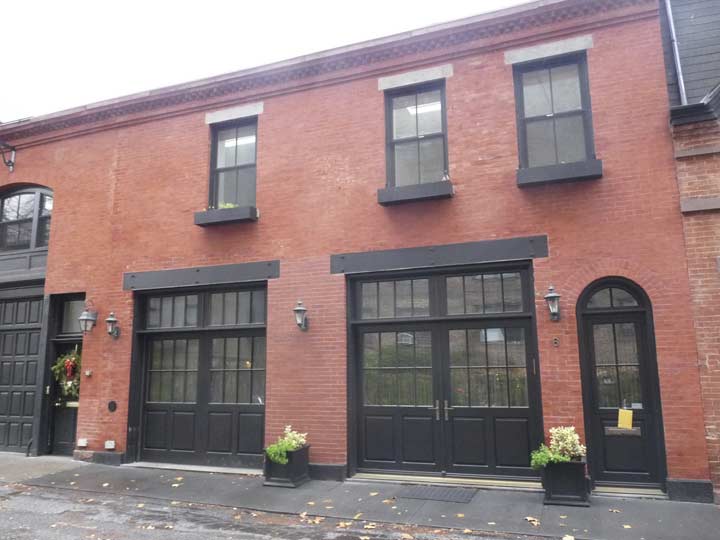
#6 and #8 Grace Court Alley. Frequently stables or carriage houses are built in pairs.

#12 Grace Court Alley. Note the very narrow side door and the presence of a hay crane above the second floor. The window is larger to admit large hay bales. #10, out of the photo to its right, is nearly identical.
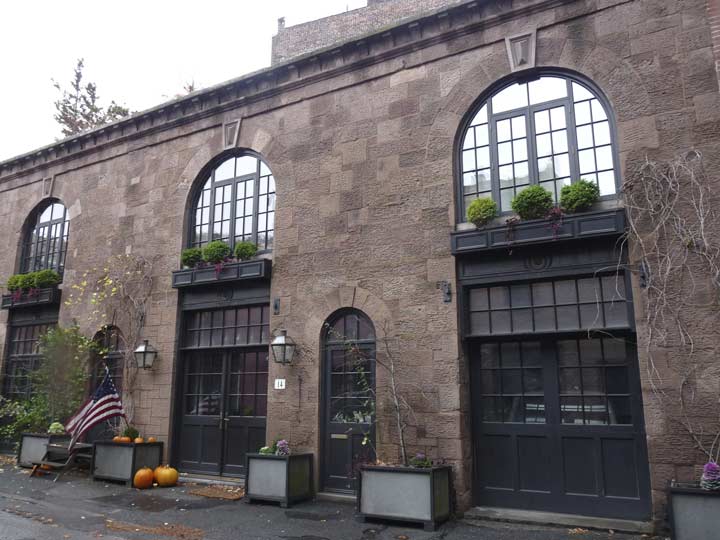
#14 Grace Court Alley. The AIA Guide praises the “tooled brownstone wall” as “lusty.”

At GCA #16, no window is the same as the other, and there’s another hay bale crane. There’s also another unusual aspect here…
The only city-operated light pole in the alley. Other illumination is provided by lamps outside front doors. This is the same style formerly used on narrow alleys or lanes all over NYC, but it once was a ubiquitous scrolled style mounted on telephone poles between the 1910s and 1950s. The original luminaire was an incandescent bulb with a radial-wave diffuser, but I remember it with a Westinghouse AK-10 (inside info for you lamp buffs). It’s on its second sodium-vapor lamp and eventually, a light-emitting diode bright white will probably be installed here. One block east on Henry Street, Hunts Lane also has one of these scrolled wall lamps.
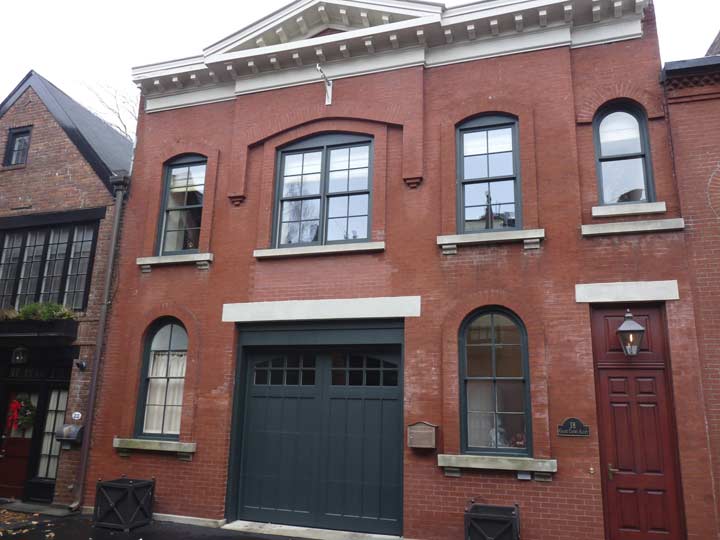
One of the larger carriage houses in the alley, #18. It also has a bale hook and window to admit the bales. Note the fake gas lamp above the door.
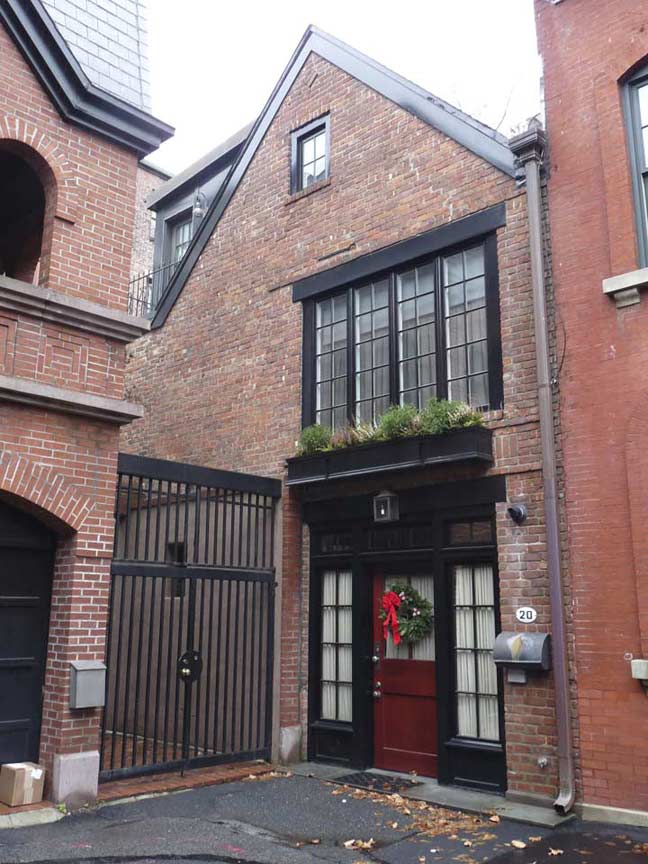
#20, a small carriage house tucked at the southeast end.

#21 Grace Court Alley is apparently the new kid on the block, as the AIA Guide claims it was constructed in 1994. Real estate site StreetEasy has interior photos (though they’re claiming 1900).

#19 Grace Court Alley has strayed far from its original stables layout.
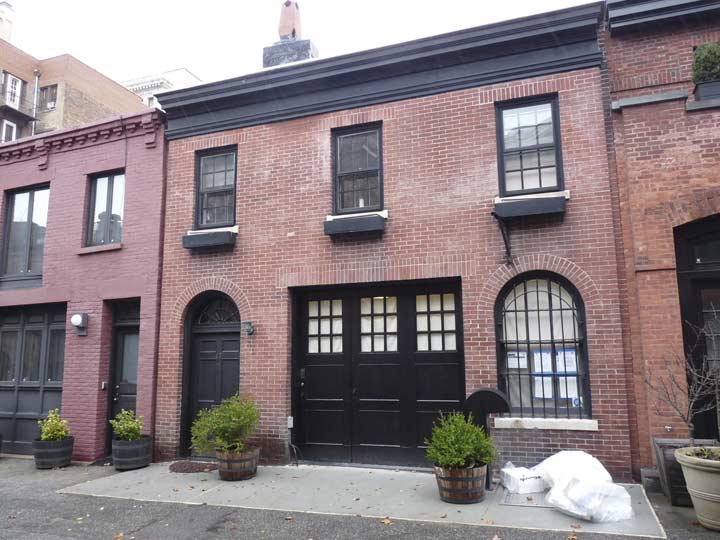
#17. Each house in the alley retains its extra-wide front door, a legacy of the stable days.
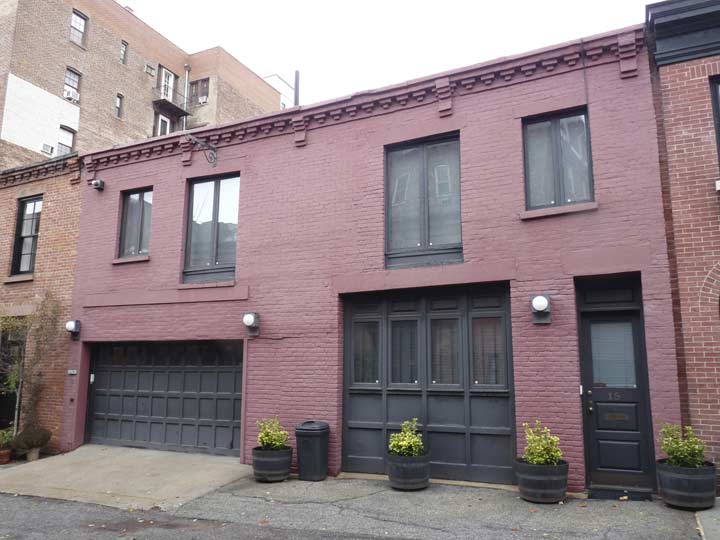
#15 has had a side garage added since it was built in the mid-to-late 1800s.

#13 is the westernmost remaining carriage house on he north side of the alley. There had been a #1, 3, 5 and 7, but they were torn down decades ago in favor of a high-rise apartment house.
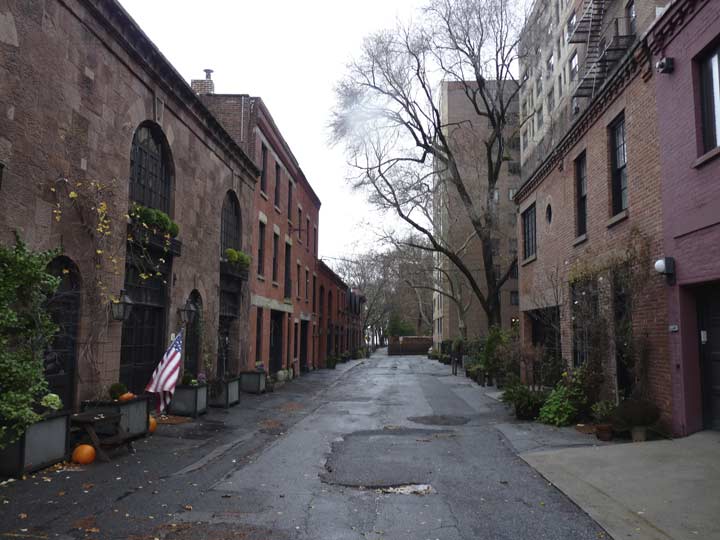
Had I won that $1B Powerball prize drawn in January 2016 I would have snapped up a few of these houses, but not to be.
1/23/16

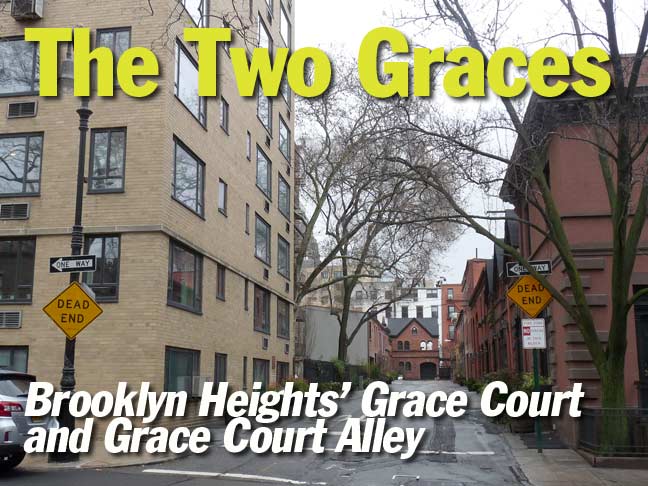

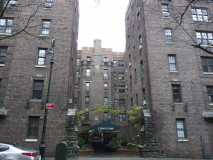
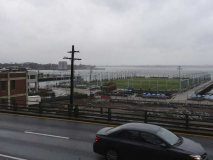
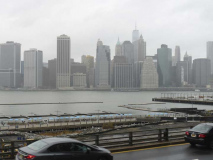
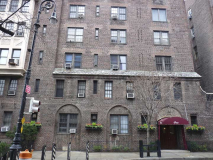
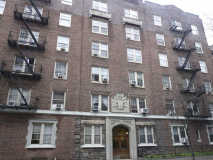
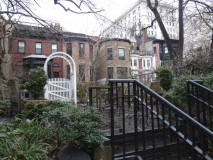

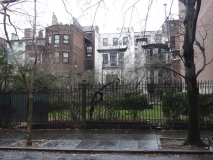
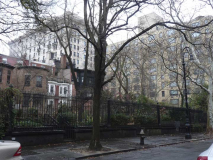
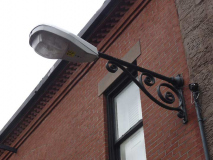
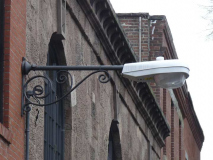
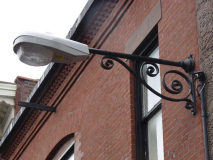
10 comments
What a difference a month makes. Everything would be under two feet of snow if you were out there today.
Brooklyn Heights was always very nice….I used to walk up to Atlantic Avenue and get the Fifth Avenue bus that started at Furman Street and went right to Bay Ridge and Home…..
I recall GCA from 30+ years ago when the then-current Mrs F. and I were looking for our first shared residence. Prices back then were lofty but boy oh boy were the spaces amazing. Would up with a great brownstone on Bergen instead.
Great article and photos, gonna link to it from the Brooklyn Heights Blog!
Here’s a pic of one of the Grace Court houses, pre-renovation:
http://brooklynheightsblog.com/archives/17235
“Episcopalian or Anglican, as preferred these days.”
Episcopalian is preferred by those who are still part of The Episcopal Church (TEC) while Anglican is preferred by those churches/dioceses that have withdrawn from TEC (but who do not necessarily want to admit that).
I grew up at 2 Grace Court in the 70’s and 80’s… Nothing can compare to this neighborhood. I miss my old home. I miss the vibe, I miss the smell, the sound and mostly the seasons of Brooklyn Heights. It’s my heart and my true ‘home’.
Terrific post. You inspire me to go there.
Great post. Minor correction. The gas lamp at 18 Grace Court Alley is actually real. Again, great work!
WOW!! What a great job you’ve done compiling this blog post! I had the good fortune to walk these two ‘streets’ when I visited Brooklyn eight years ago. My great-uncle and his family lived at 4 Grace Court Alley in 1915. He was a chauffeur and his wife was a housekeeper presumably for someone who lived in Grace Court.